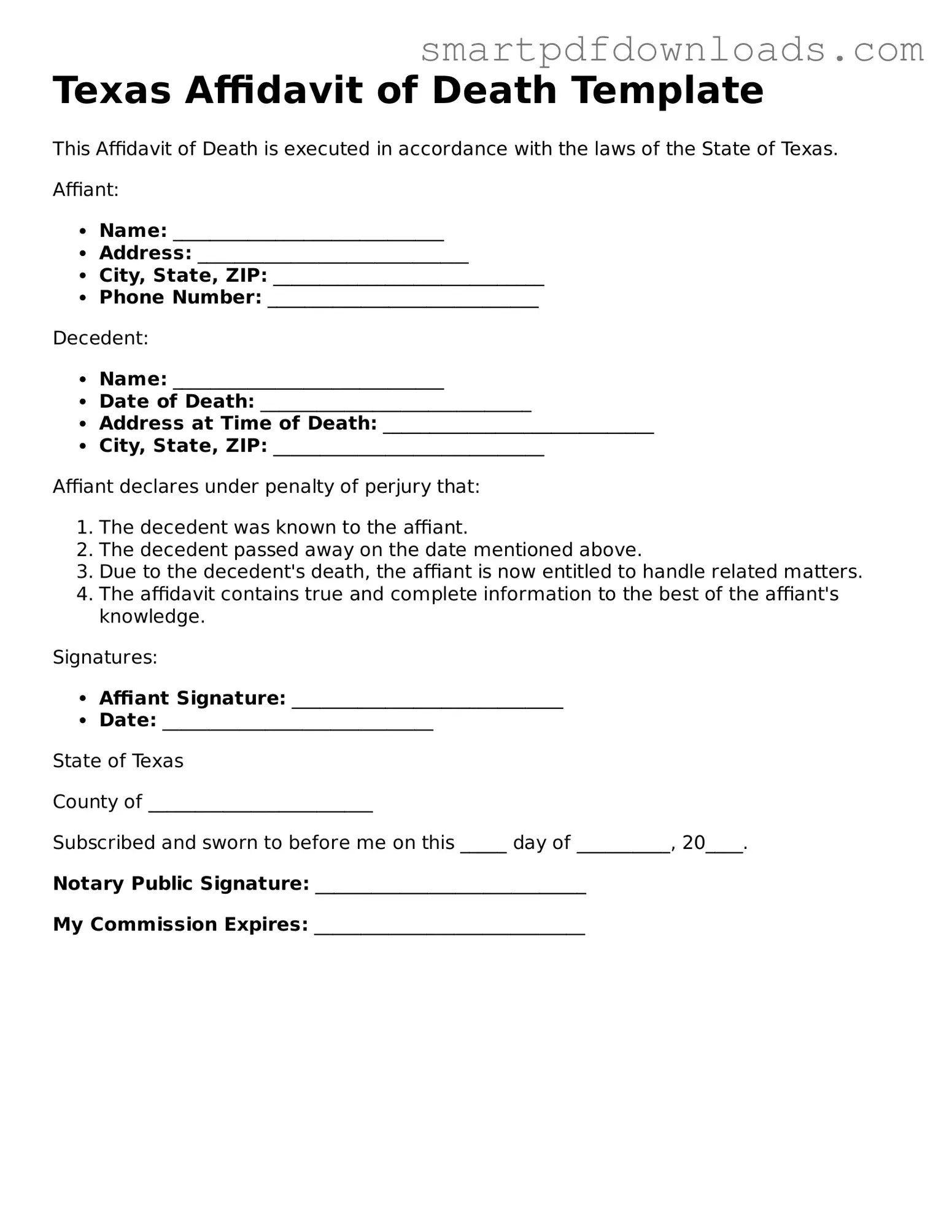Legal Affidavit of Death Form for the State of Texas
The Texas Affidavit of Death form is a legal document used to officially declare the death of an individual, primarily for the purpose of transferring property ownership or settling estates. This form serves as a crucial tool in the probate process, allowing heirs and beneficiaries to navigate the complexities of estate management. Understanding its significance and proper usage can simplify the often challenging task of dealing with a loved one's estate.
Edit Affidavit of Death Online
